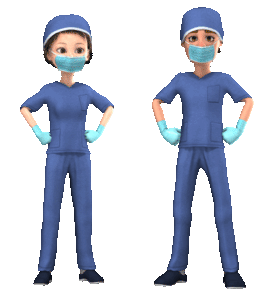14th November 2020, Dr Chee L Khoo

It’s been at least 12 weeks since we started to wear facemasks at the practice full time with all face to face consultations. I must admit that during the first week, I did feel a bit suffocating with the mask on. I remember having to stop mid-sentence to catch my breath. I could sympathise with many patients, particularly patients who has COPD, asthma or heart failure. A few patients actually commented that there are posts circulating around in social media that perhaps, facemasks may decrease the oxygen availability when breathing. Is that true? Are we in danger of hypoxia in our practice?
You are probably not aware what is circulating in social media. Some are far-fetched but they present “logical” or “compelling” argument that masks “deprive your body of oxygen”. Various experts have debunked these arguments (1). The WHO specifically says: “The prolonged use of medical masks when properly worn, does not cause CO2 intoxication nor oxygen deficiency. The issue is easily solved with a simple clinical trial.
In a crossover study, 25 participants from a retirement condominium in Ontario self-measured peripheral oxygen saturation (SpO2) before, while and after wearing a facemask. To minimise variability, participants were all provided with 3-layer plane-shaped disposable nonmedical face mask with ear loops (Boomcare DY95 model, Deyce Leather Co Ltd) and a pulse oximeter.
Instructions on how to correctly wear the mask (to ensure adequate nose and mouth coverage) and measure SpO2 were provided. Participants were instructed to self-monitor and record SpO2 3 times 20 minutes apart for 1 hour before, 1 hour while, and 1 hour after wearing the mask while they were at rest or performing usual activities of daily living at home.
The average age of the participants were 76.5 years. Participants with significant cardiac and respiratory conditions that could lead to hypoxia were excluded. Many patients had the usual co-morbid conditions expected for that age group including hypertension, asthma, interstitial lung disease, bronchitis and diabetes.
What did they find?
The pooled mean SpO2 was 96.1% before, 96.5% while, and 96.3% after wearing the mask (Table 2). None of the participants’ SpO2 fell below 92% while wearing masks. The paired mean differences in SpO2 while wearing the mask were minimal when compared with the value before they wore the mask (0.46% [95% CI, 0.06% to 0.87%]) and the value after wearing the mask.
There you have it. Wearing facemasks do not reduce oxygen saturation. Surgeons have been wearing three-layer masks for hours without issue for years. Unfortunately, I doubt if the conspiracy theorists will accept your reassurance.
References:
- Goodman J. and Carmichael F. Coronavirus: ”deadly masks” claims debunked. BBC. Posted July 24, 2020. Accessed November 13, 2020. https://www.bbc.com/news/53108405
- Noel C. Chan, Karen Li, Jack Hirsh. Peripheral Oxygen Saturation in Older Persons Wearing Nonmedical Face Masks in Community Settings. JAMA October 30, 2020. doi:10.1001/jama.2020.21905
